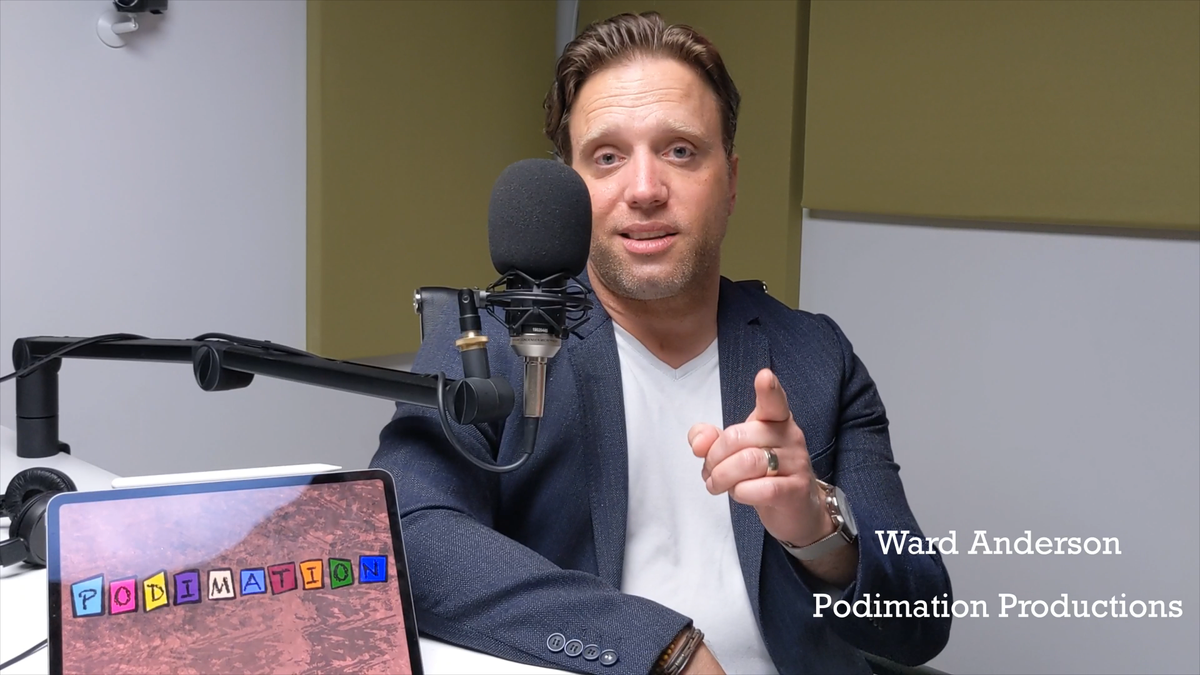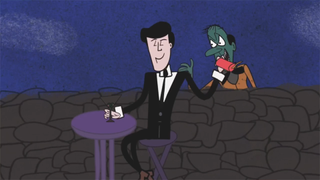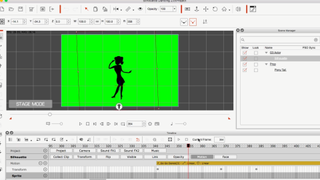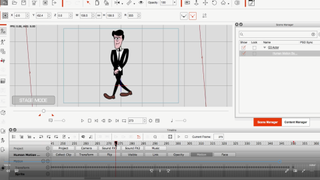Using Cartoon Animator to revive retro TV cartoons
Recreating classic cell-based animation with real-time software

Using Cartoon Animator, TV and radio host Ward Anderson is reviving the retro look of the much loved television cartoons of the 1960’s and 70’s in a series of short films and music videos. With a background in writing and performing rather than animating, Ward explains how Cartoon Animator allows him to get the animation results he wants in faster timeframes, without the extensive knowledge from a background in animation.
Cartoon animation for music videos and pilot shows
Ward is currently making short-form cartoons, with a focus on music videos and short comedy cartoons of lengths that vary from a minute to five minutes. He recently created the newest music video for acclaimed jazz artist Matt Dusk (it’s the video for his new single, Summer Wind, originally by Frank Sinatra). Ward is also developing pilots for TV and the web.

“I’ve tried all of the 2D animation software available," says Anderson, "and I have liked something about all of them. But I’m not a 'tech' person. I’ve been a creative person and creator my entire life, but my background is in writing and performing, so I’ve never been good with the software that is—for me—very technical or intricate. I don’t have any formal training in cartooning or illustration. I learned cartooning and animation from studying the cartoons I grew up with."
"What I’ve found," he adds, "is that Cartoon Animator is the best software for animating as I do. I feel as if there’s less of a technical curve with it, from learning it to applying it to new projects. It’s great software for people who understand even the most basic fundamentals of animation. And especially those who want (or need) to create solid 2D work quickly and efficiently without losing quality."

Using sprite-based animation to mimic cell-based animation
“Cartoon Animator 4 includes so many templates that make rigging characters much easier than other programs. I used to spend forever rigging a character in other programs, and still wasn’t happy with the results. Having rigging templates was the first game changer for me when switching to CTA4,” says Anderson. “The other is the pre-programmed motions that can be inserted into any character in any project. You need a quick run cycle? They’ve got that. The pre-programmed motions make it easier to put together quick and easy rough ideas of what I want to accomplish and I can modify them significantly."

“For me," he adds, "it’s better than storyboarding in that I can use the motions as a way to envision not only what the character’s movement might look like in a finished project, but it helps me to gauge timing. Even if you’re not going to use any of the add-ons and pre-designed content in a final project, they absolutely come in handy when planning and developing. Cartoon Animator is an excellent program to have. I also imagine it’s a great software for people who want to develop and produce animation—and need to therefore understand how to create it—but aren’t artists themselves. There are more and more people producing and directing animation these days who aren’t trained artists. Cartoon Animator is a great program for them too."
Read more:

Thank you for reading 5 articles this month* Join now for unlimited access
Enjoy your first month for just £1 / $1 / €1
*Read 5 free articles per month without a subscription

Join now for unlimited access
Try first month for just £1 / $1 / €1
Get the Creative Bloq Newsletter
Daily design news, reviews, how-tos and more, as picked by the editors.

Daniel John is Design Editor at Creative Bloq. He reports on the worlds of design, branding and lifestyle tech, and has covered several industry events including Milan Design Week, OFFF Barcelona and Adobe Max in Los Angeles.